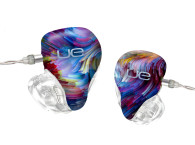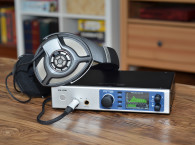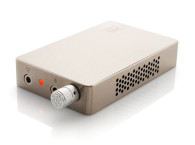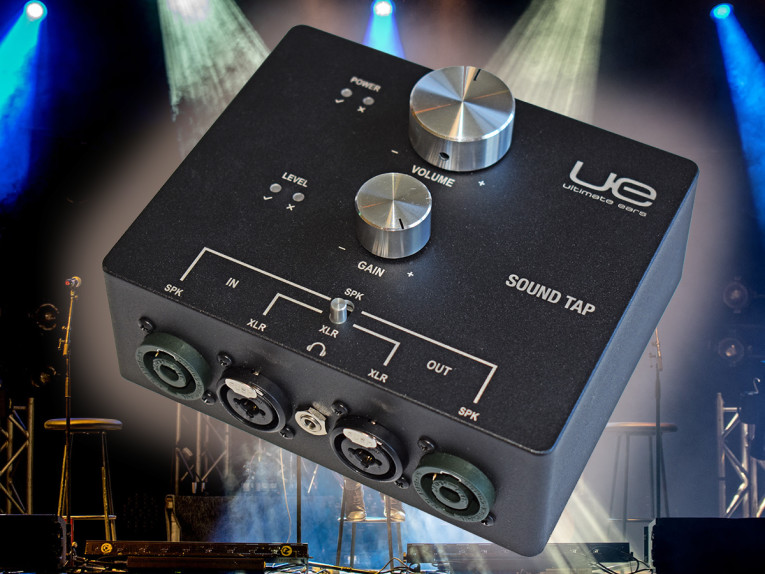
Many performers have eschewed the use of conventional fold-back monitors for stage use. Besides the difficulty of setup to prevent feedback, it’s often tough to hear yourself over the noise that the other folks on stage make. A popular alternative in larger venues is the use of in-ear headphones or in-ear monitors (IEMs), which totally avoid feedback and can provide a significant degree of acoustic isolation. Ultimate Ears is one of the foremost suppliers of in-ear headphones at the premium end of the market, and its line of stage-focused headphones features models with frequency responses and sensitivity optimized for different instruments.
Of course, when you decide to go this route, the first problem that pops up is, where do you plug in your headphones? The mixing board is pretty remote, wireless connections in crowded arenas are dicey at best, and hookups on stage can be challenging and don’t easily allow the performer to control the volume. And let’s not even mention hum issues. Ultimate Ears (in this case, its professional division UE Pro) created the Sound Tap DI Box as an easy solution. It allows the sound to be tapped from a line level (mixing board) or speaker level feed, while passing the signal through to its intended destination unmolested. The signal is sampled and sent to a performer-adjustable headphone amplifier.
Physically, the Sound Tap is packaged in a heavy-duty cast Hammond case with a black wrinkle finish and easy-to-read legends (see Photo 1). Input and output connectors are combo XLR/TRS/TS for line level and Speakon two pole for speaker level, switch selectable. Headphone output is via a standard 3.5mm phone jack. Two 9 V batteries are used for power, with LED indicators (green and red) for battery condition. The entire package is quite rugged and survived a lot of banging around when I used it, perfect for touring musicians.
Inside, the unit is built on two thick double-sided PC boards with gold-plated traces (see Photo 2). Most of the circuitry is surface mount and is constructed of high-quality parts. The signal handling is done using Analog Devices AD822 op-amps, an excellent choice for battery power because of their low current consumption and ability to swing rail-to-rail in a single-ended power supply topology.
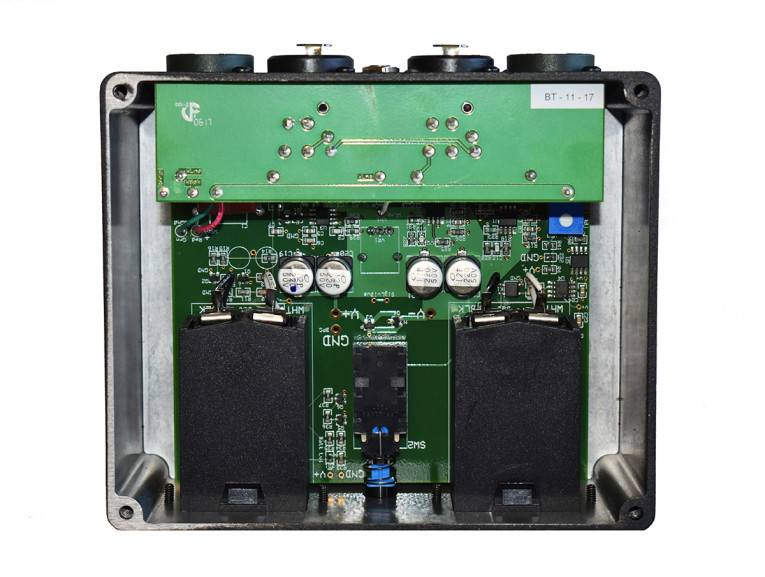
Retail price of the Sound Tap is $249, but I’ve seen street pricing at less than $200. Sound Tap is easy to set up and use— plug in the signal source and receiver, turn the Input Level knob up until you see the green LED light, adjust the Master Volume to a comfortable level, and you’re done! If the system is overdriven, a red LED will flash, and the headphone amplifier is equipped with a foldback voltage limit to help prevent hearing damage in the event of an unplanned… incident (e.g., someone hot-plugging a guitar, which of course would never happen).
Note that although it is set up to run stereo headphones, Sound Tap is single channel—there are two separate op-amps used for each channel that output identical signals. For performance monitor use, this should not be a limitation (there’s only one of you), but it may or may not be suitable for monitoring the overall mix. But that’s why you pay the front-of-house (FOH) sound guy, right?
Performance
I first did the basic measurements, using an Audio Precision APx515 audio analyzer and an APx1701 transducer interface to drive the speaker inputs. Measurements taken using the line level and speaker level inputs were similar enough that I can show them here interchangeably.
The line level input impedance measured about 8 kΩ at either input, high enough not to bother mixing boards or amps in their pass through. I did not see much variation in the input impedance with frequency over the audio band.
Output impedance of the headphone amp was a bit high at 21 Ω — if your headphones have significant variations in their impedance at different frequencies, this could cause some frequency response anomalies. Note, though, that Sound Tap’s basic function is performance monitoring rather than use for fine adjustments of EQ. And if your headphones have a relatively high impedance (100 Ω or higher) the effect of the source impedance on frequency response will be negligible.
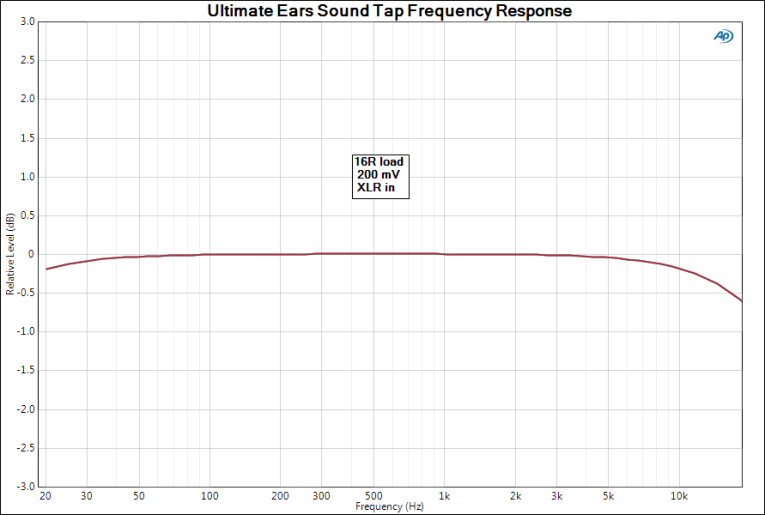
Because the in-ear headphones from Ultimate Ears for which this unit is presumably optimized have relatively low impedances, my testing was done with 16 Ω loads, one on each channel. Since the two channels are driven with separate op-amps, there was a possibility that they wouldn’t match exactly, but I found that in actuality the matching was quite tight. I adjusted the input and output signals to 200 mV (which represents a pretty high volume for Ultimate Ears’s very sensitive headphones) and first measured the frequency response. Figure 1 shows the results. There’s a small rolloff in the top octave, with response being down by about 0.7 dB at 20 kHz. This would be barely audible to young, fresh ears, but it’s doubtful that this would be significant to a working musician.
I was somewhat apprehensive about the use of AD822 op-amps to drive low impedance loads — while their distortion performance is quite good at moderate loads (the distortion spec ratings are taken at 10 kΩ), 16 Ω is really pushing it. So I paid particular attention to two things — clipping level and distortion performance at high frequencies, areas where the heavy loading might cause performance compromises.
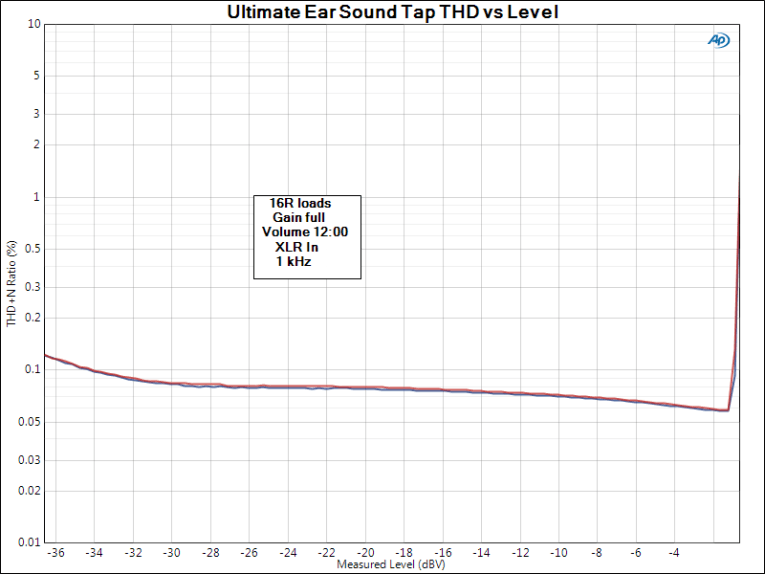
Figure 2 shows distortion at 1 kHz as a function of level. It stays reasonably low (0.07%) up until clipping at about 0.95 V, which corresponds to “really, really loud” using the Ultimate Ears headphones. This is much better than I expected. As we went up in frequency, things got a bit uglier. Figure 3 shows how the distortion at 200 mV varies with frequency— as the op-amps’ open loop gain (and hence feedback) rolls off with increasing frequency, distortion rises, reaching 1.2% at 20 kHz, all dominated by third-order harmonics. The AD822 is definitely breathing hard with this load. Is this an audible amount of distortion? Likely not, and for on-stage performance application, it’s easily good enough.
The upside of the use of the AD822 is the low current drain. Ultimate Ears rates battery life at 40 hours, and I’ve run 48 hours on the current set of batteries without the voltage dropping low enough to light the red low-battery LED. In my opinion, this is a smart engineering trade-off—losing power during a show is NOT an option.
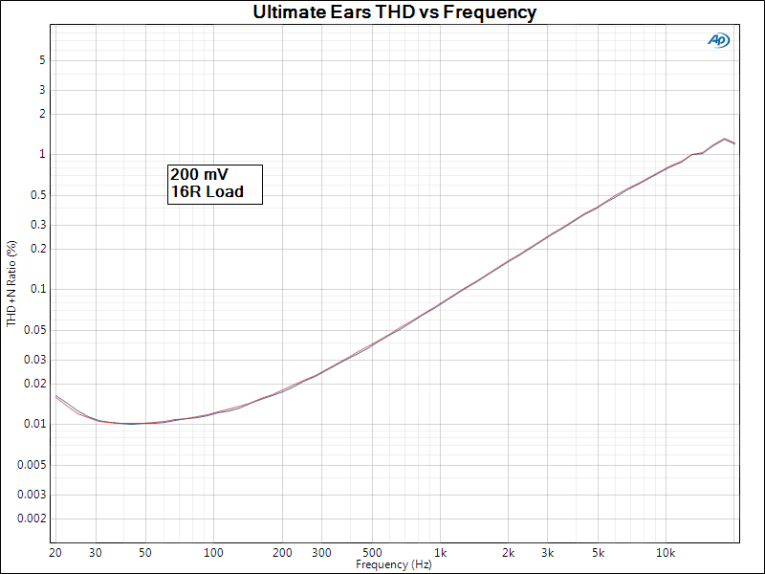
Wrap Up
The UE Pro Sound Tap provides an easy and convenient way to connect in-ear monitors or other headphones for on-stage monitoring. It’s rugged, versatile, easy-to-hook-up, has long battery life, and as the British expression goes, “Does what it says on the tin.” It worked flawlessly for me and, if you’re going the IEM route, is well worth the moderate cost. ax
Ultimate Ears (UE) Pro Sound Tap
http://pro.ultimateears.com/products/custom-monitors/for-stage/uesoundtap
Cost: $249
Resource
Ultimate Ears Stage Products,
http://pro.ultimateears.com/products/custom-monitors/for-stage
This article was originally published in audioXpress, November 2017.




